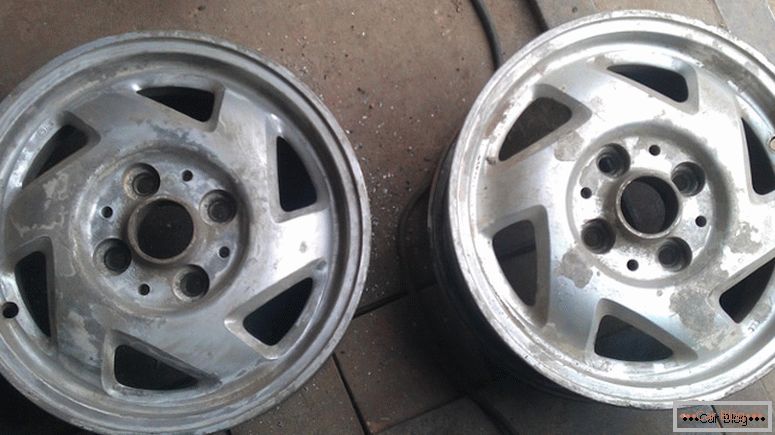>
Experts say that one of the frequent causes of engine failure is insufficient cooling system performance. For this work is largely responsible for a special fluid that circulates through the engine system and does not allow the temperature to rise above the permissible values. Therefore, it is impossible to underestimate the role of coolant (coolant). Otherwise, you run the risk of facing serious enough problems that can turn into premature wear of engine components and its complete failure. At present, a stubborn struggle continues between the two cooling fluids. And motorists want to know that it is better to choose - antifreeze or antifreeze. To do this, you need to understand in detail the features of the two liquids, their composition, advantages and disadvantages against the background of a competitor.
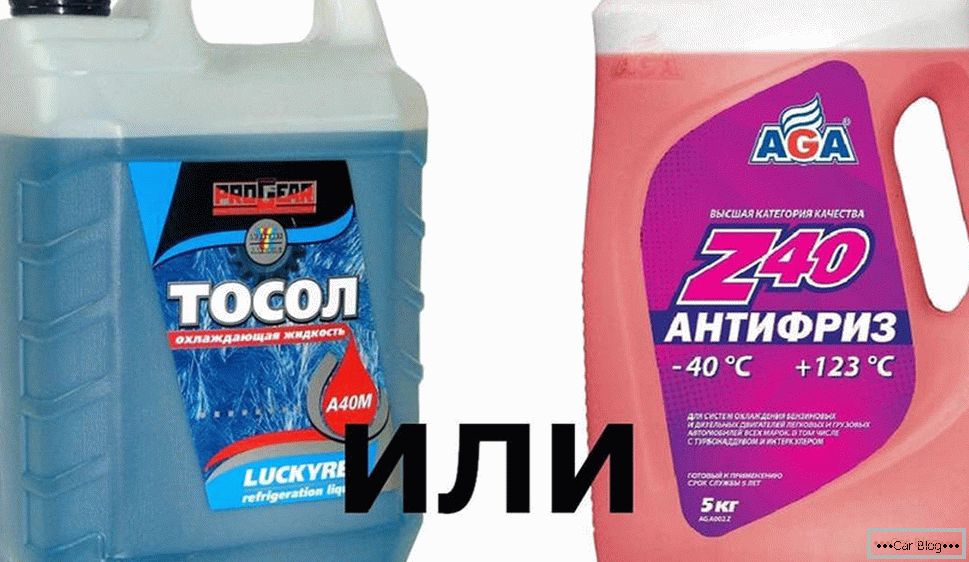
Comparison of the effectiveness of the use of antifreeze and antifreeze.
Читать далее про то что лучше: тосол или антифриз-->
Main characteristics of the coolant
Cooling fluids are based on the mixing of water, ethylene glycol and special additives, whose main task is to prevent metal corrosion in the engine and its systems. Each manufacturer of coolant uses its own recipe and a unique composition, which may differ significantly in technology and additives used. In this case, the additives are always necessarily part of the cooler. Before pouring a particular compound into the engine of your car, you need to familiarize yourself with the instructions for use and study the recommendations given by your automaker. Each situation is considered individually. In the manual, which comes bundled with the machine, prescribed a list of tests with liquids, their name and class. So, the automaker gives clear instructions on which particular engine this particular engine interacts best with. Because the recommendations of the manufacturer of your car should be the primary source of correct information. There are several technologies for the production of coolant that are currently used:
- Classic. It implies the use of special additives in the coolant composition, which relate to salts of inorganic acids.
- Carboxylate. Here the key components are carbonates. These are organic acids that effectively protect the metal of the engine from corrosion processes.
- Hybrid The technology came after the carboxylate. It also uses additives based on salts of carboxylic acids. But phosphates and silicates are additionally added here.
Now you need to more thoroughly understand the features of each of the compositions. This will allow you to understand which coolant is better to choose between antifreeze and antifreeze.
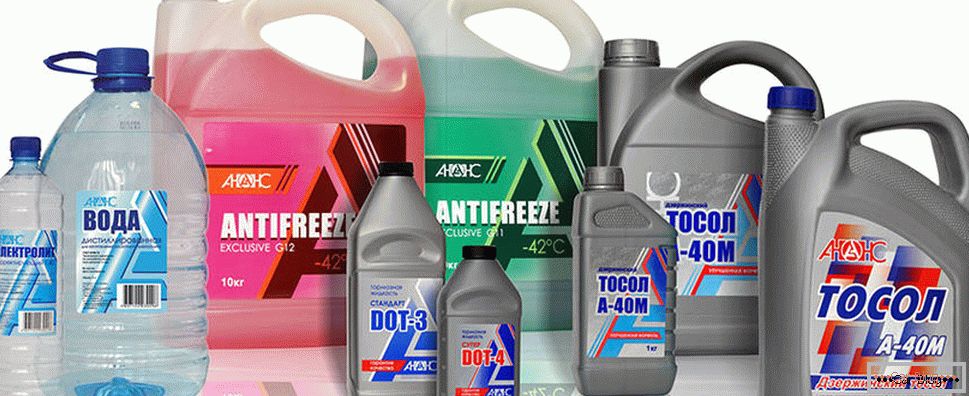
Antifreeze
To prevent overheating of the power unit, many motorists choose antifreeze. Its boiling point, depending on the composition and manufacturer, is up to 150 degrees Celsius. At negative temperatures, the structure of the liquid does not change under conditions of -38 degrees. Special additives, which are part of antifreeze, reliably protect the engine from possible corrosion processes. For a car, this property plays a key role. In the absence of special additives antifreeze would have a very aggressive composition. As a result, the process of destruction of radiator walls, nozzles, rubber pipes and the motor itself would begin. Modern developers come up with new additives that can increase the efficiency of antifreeze, while the negative impact on the engine will become much softer. So that consumers can understand what kind of antifreeze they buy, manufacturers began to use special dyes. They give the composition the desired color, thereby helping to distinguish different compositions.
- Also available with the symbols G11 + and G11 ++. Such coolants can be distinguished by their green color. They are designed to work in the temperature range from -40 to +130 degrees Celsius. This such antifreeze significantly exceeds the traditional antifreeze. If there are signs of corrosion in the engine, the additive based on carboxylic acid, which is part of the coolant, is activated. It begins to destroy corrosion and improves engine performance.
- G12 (G12 + and G12 ++). These antifreezes are red. They are considered to be more modern and improved liquids that work well on demanding and rather delicate cooling systems of foreign cars. There are no chemical additives. Instead, manufacturers use organic additives. Moreover, this approach is considered a significant advantage, since the heat transfer indices are noticeably improving.
It is believed that red antifreeze is best used for radiators that are made of copper. But green antifreeze is best suited for aluminum cooling radiators. This is confirmed by many drivers in practice.
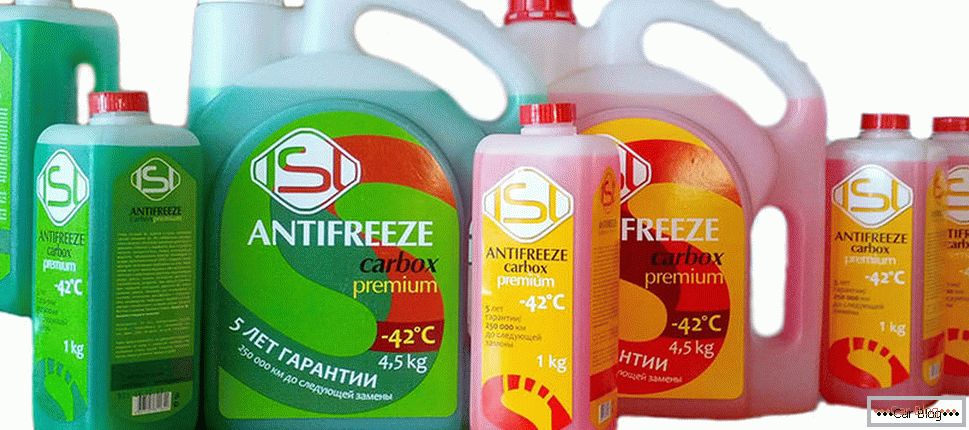
Tosol
Different cooling liquids, which are produced on the basis of classical or traditional technology, are called Tosol. Most commonly offered on the market as a blue liquid. In fact, there is no significant difference between it and antifreeze. Antifreeze is the same antifreeze. Only the composition received its name in Soviet times. Then the antifreeze was the answer to imported antifreeze, was its full-fledged counterpart. That is, only those coolants that were produced in the USSR according to a special recipe can be considered full-fledged tosol. Now no one is engaged in this, because antifreeze has confidently supplanted the less effective antifreeze. But still the market continues to implement this type of cooler. In fact, you may be faced with sufficiently high-quality antifreeze, and frankly a fake, or low-quality coolant. There is no modern company that uses the classic Soviet recipe.
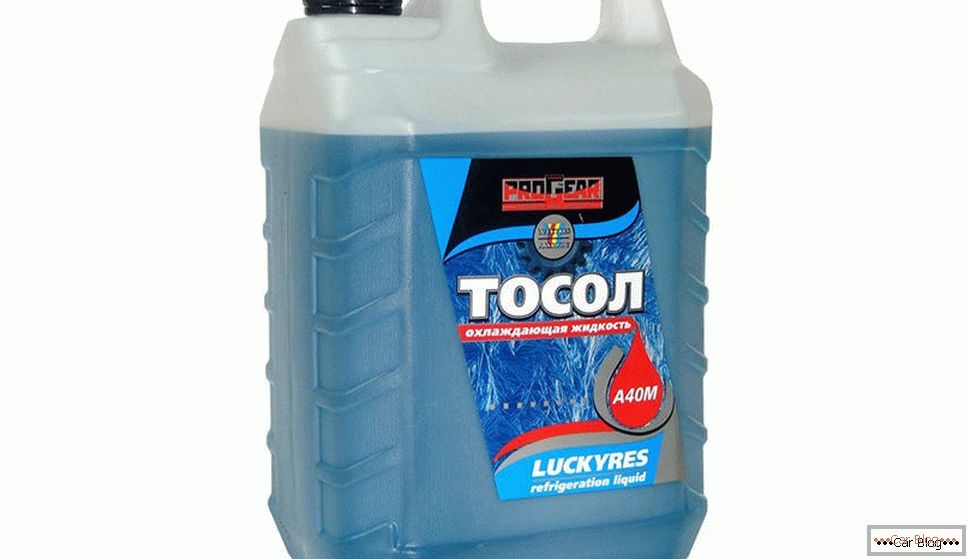
What is the difference between coolant
When the cars were completed with cast-iron and practically immortal motors, they were cooled using a simple mixture, which included water and ethylene glycol. Such a composition did not damage the motor. But on modern cars when heating fluid that flows through the systems, there is a significant threat to the integrity of the radiator, cylinder block and other components. The traditional mixture is no longer suitable, I had to find an alternative solution. So in the USSR created antifreeze. Therefore, for Russians and residents of the post-Soviet space, all coolants are associated precisely with the concept of antifreeze. In reality, there is practically no difference between the two liquids. Antifreeze is the same antifreeze, only domestic production  Discounts for new cars! Profitable loan from 9.9% installments 0%
Discounts for new cars! Profitable loan from 9.9% installments 0%  adom.ru. Therefore, in the market it can be found in different shapes and colors. But there are some differences in terms of technical characteristics between all coolant. They differ among themselves in:
adom.ru. Therefore, in the market it can be found in different shapes and colors. But there are some differences in terms of technical characteristics between all coolant. They differ among themselves in:
- protective properties against corrosion;
- lubricity;
- freezing and boiling point.
It all depends on the technology that the manufacturer uses. That is, the domestic antifreeze, which in fact is antifreeze, may have a composition of higher quality than imported liquid, called antifreeze. And vice versa. It is practically impossible to compare them, since the present antifreeze does not exist anymore, and all produced coolants are antifreezes, regardless of the country of origin and composition. To understand which liquid is preferable and what is best to fill, consider the key difference between antifreeze and antifreeze. Since the composition is still different, many will be able to make the final choice for themselves.
What to flood
Having understood the competition between antifreeze and antifreeze, we make the right choice and buy the most suitable cooling liquid for your car. In practice, making a smart purchase is not difficult. Here you need to determine which of the compositions suits you better than others. Then you should choose a good manufacturer, because the quality and efficiency of the cooler depends on it. We will compare three main positions:
- antifreeze;
- green antifreeze;
- antifreeze red.
We will perceive antifreeze as a domestic alternative to imported antifreeze. Although our companies produce coolant, calling them antifreeze.
Tosol
In the market of cooling liquids there are antifreezes of red and blue. This is not just the decision of the manufacturer to add one or another dye. The color indicates to the consumer what temperature this composition is designed for. Such fluids can function for 2 to 3 years. That is, their service life is not more than 36 months. Then the composition loses its properties. Pour overdue antifreeze absolutely impossible. The temperature of boiling ranges from 110 to 115 degrees Celsius. But you also need to look at the freezing point. Here focus on the color of the liquid. If you have at your disposal a classic blue antifreeze, then its maximum temperature will be -40 degrees Celsius. Living in regions with severe winters, it is better to choose a liquid of red color. It can withstand loads up to -60 degrees Celsius.
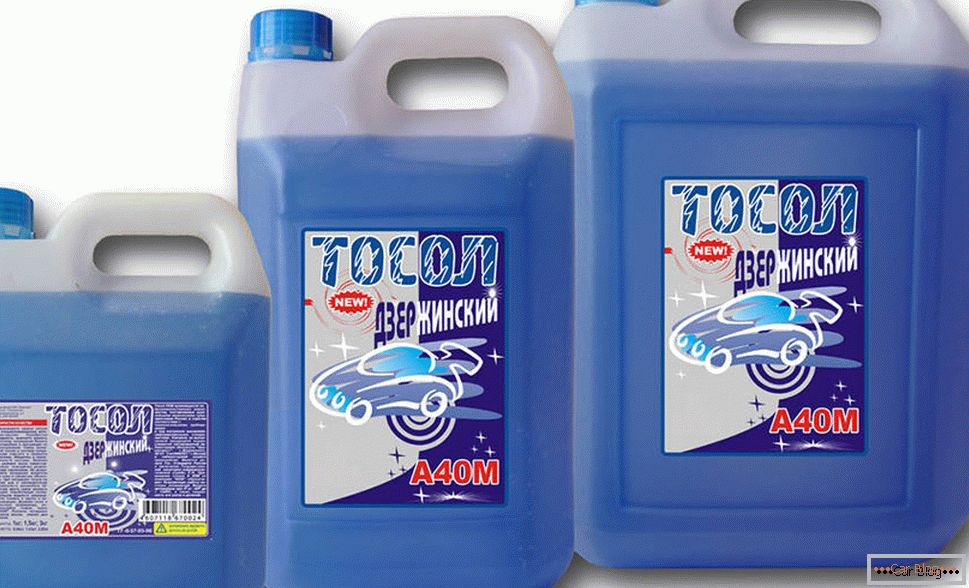
Green Antifreeze
If we talk about what is better - antifreeze or antifreeze, then there is an advantage on the side of the green cooler. It has an improved composition and better technical characteristics. It functions well in winter. Although it was not without flaws. This coolant consists of organic additives and special chemical additives. They provide the necessary level of engine performance, maintain the desired temperature and prevent the destruction of the power unit. The basis for the protective properties are borates, phosphates and carboxylic acid. The cooling fluid is in contact with the internal surfaces of the system, further enhancing their protection. This compound creates an additional protective barrier. This reaction helps to reduce the risk of metal destruction. But green antifreezes have their drawbacks that motorists need to pay attention to. These blends limit heat transfer performance somewhat. It is also recommended to change the cooler at least 1 time in 2 years.
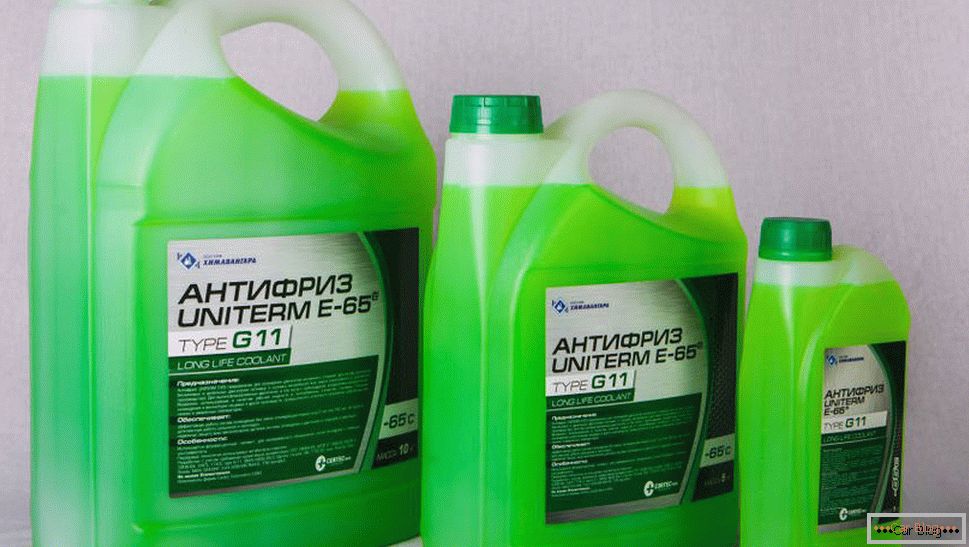
Antifreeze red
A distinctive feature of red coolers is a large amount of carboxylic acid, as well as the use of almost always organic types of additives. If you think it is better to use antifreeze or antifreeze, in this competition there are also advantages on the side of antifreeze. The composition is manufactured using a special technology that helps to ensure reliable protection of pipes, tubes, internal walls and metal from destruction. Also, the liquid increases heat transfer, which has a positive effect on the engine. The composition interacts with areas in the system where there are traces of corrosion. Antifreeze covers them with a protective film, which over time does not collapse. At the same time, the cooling system of the power unit is prevented from clogging. Another indisputable advantage of red anti-freeze is their long service life. When operating up to 5 - 6 years, the liquid does not lose its original properties. Because often change the composition is not necessary. As for the shortcomings, the only disadvantage of a red cooling antifreeze for an engine is the higher cost. But taking into account all the objective advantages and a long service life, the cost of such a cooling liquid is fully justified.
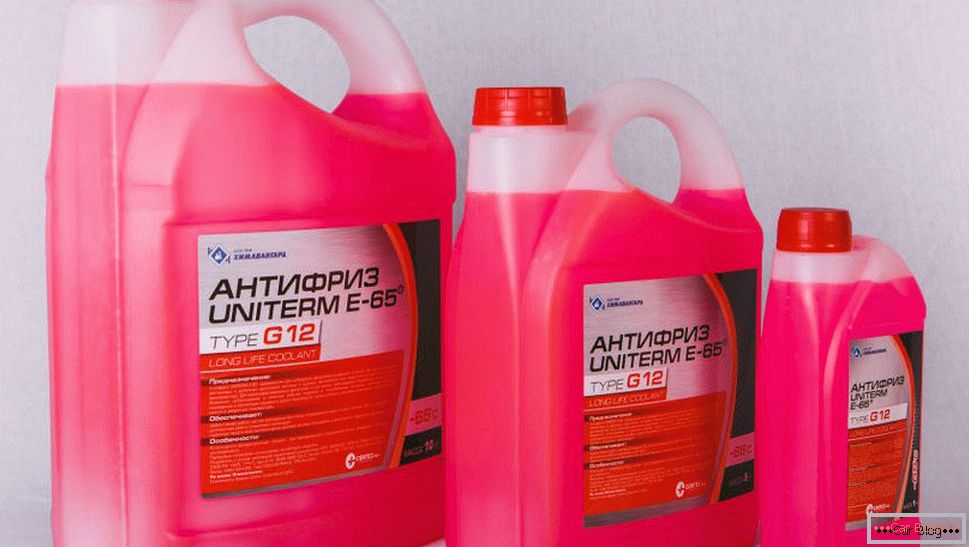
Important conclusions
Given all the voiced features, advantages and disadvantages that characterize different types of cooling liquids, we can draw the appropriate conclusions regarding their application. It is impossible to say objectively which of the cooling fluids is better. It all depends on the specific situation. Therefore, they should be considered individually. Summing up, we can draw the following conclusions:
- Antifreeze is recommended and allowed for use in cases when you have a car of domestic manufacturer at your disposal. Or you have an old foreign car that uses engines of an obsolete model. There is no need to overpay for expensive antifreeze. Antifreeze perfectly copes with the tasks, because the motor is not so demanding of protective functions. And because the composition of the antifreeze will not aggressively affect and destroy the elements of the engine or cooling system.
- Experts advise that green antifreeze be used to add new domestic cars to foreign cars, if a large amount of aluminum is used in their cooling systems. That is, this coolant interacts better with cars, where aluminum radiators are installed, as well as different aluminum pipes are used.
- The presence of a yellow radiator does not mean that it is completely copper. It can also be a mixture of different metals with the addition of a large amount of honey or brass. For such situations, the red antifreeze will be the best choice. It reliably protects the components of the cooling system from wear and destruction. Such cars are more demanding and "gentle", because objectively the best choice would be red antifreeze.
Each fluid has its own purpose and scope. Do not forget that the automaker gives the most accurate recommendations. Therefore, to start, take a look at the official manual, read the instructions and draw the appropriate conclusions. It does not always make sense to overpay for more expensive and more complex antifreeze if your engine functions perfectly with traditional domestic antifreeze. But on the contrary, it is categorically not recommended. If the manufacturer requires the use of high-quality antifreeze, then replacing it with cheap coolants is extremely dangerous. This may entail serious consequences, including engine failure.
Whether mixing different coolant is allowed
According to current state standards, none of the types of coolants should not contain any impurities of a mechanical type. These include small pieces of materials, dirt, dust, ash, etc. That is, when buying a mixture, you should carefully examine the liquid. If it is transparent and homogeneous, you have a high-quality cooler that can be poured into the engine of your car. This is directly related to the question of mixing different in composition coolants. Experts give several recommendations on this point:
- If the antifreezes used are of the same color, but the fluids belong to different classes, their mixing is not strongly recommended. Otherwise, the risk of formation of solid components increases, the presence of which in the cooling system of the power unit will lead to problems and possible breakdowns.
- Similarly, it is forbidden to mix different in composition antifreeze, that is, organic and mineral. When combined, a cloudy precipitate is bound to appear. If the precipitate is at the bottom of the cooling system, you expect extremely unpleasant consequences. After some time, the sediment will begin to clog radiator ducts. Then the pump is blocked, causing the engine to boil. On the consequences of boiling the engine is not worth talking about, because it leads to extremely expensive repairs.
- Regarding the mixing of different cooling liquids belonging to the same group. With this combination of compositions characteristics do not change. But as a result of heating, which will occur due to the engine operation, there is a possibility of suspension from heavy particles. The consequences can be very diverse. Sometimes the engine fails. But there were cases when the cooling continued to function normally without any changes. Since there are no guarantees, and no one can articulate the exact results of mixing such a coolant, it is not worth taking risks in this situation.
It is important to remember that the service life of any kind of coolant is also calculated in kilometers. Therefore, every motorist should monitor the mileage or the life of antifreeze or antifreeze. What comes first, on the need to make a start. After all, one driver rarely uses the car, because the coolant easily withstands 2 to 4 years. Another motorist rolls tens of thousands of kilometers, resulting in wear of the cooler is faster, and therefore have to change it before. Nevertheless, the official guide from the automaker is the main guideline for choosing a cooling fluid for an engine. You should not save on coolant, but also spend too much on what can in fact be replaced with a more affordable alternative fluid, is also optional.

